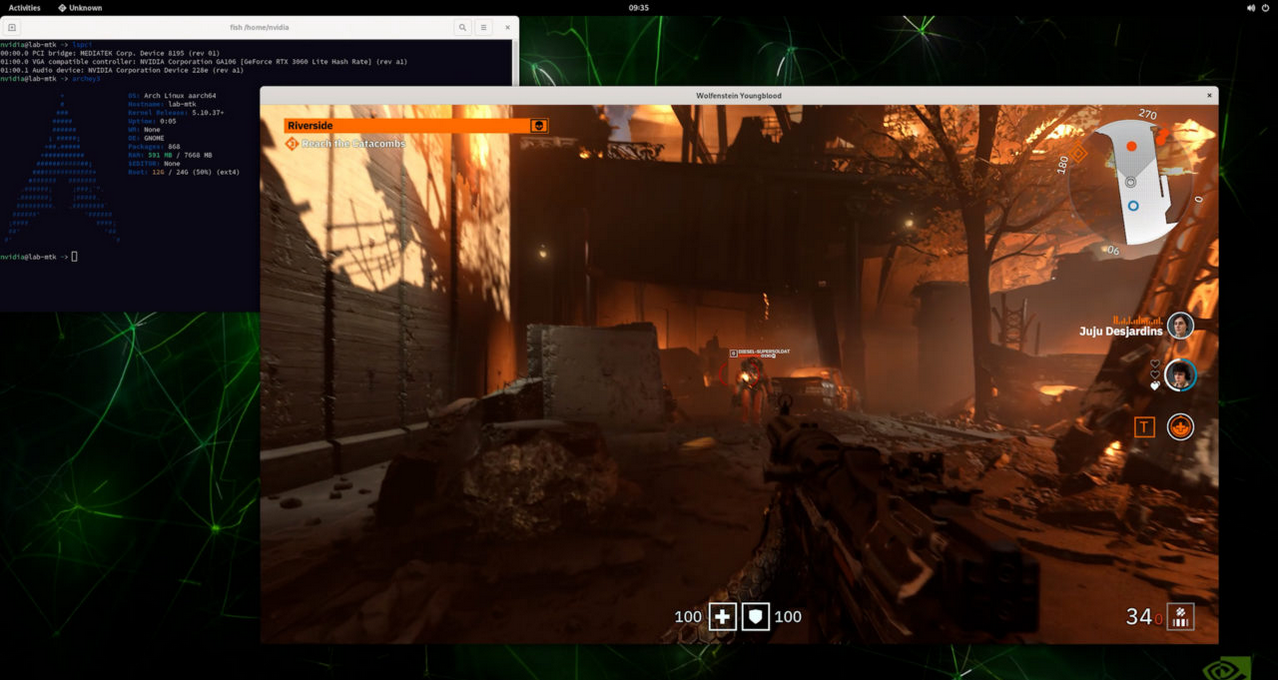
Nvidia has hinted that the future of gaming might be a lot more flexible, as it shows off one of its RTX graphics cards running alongside an ARM processor. The implications for this are substantial and could mean low powered computers come with a lot of graphics power and who knows, this could supercharge the Switch Pro (if it happens) or just make your Chromebook a gaming monster.
In the demo the company demonstrated a MediaTek Kompanio 1200 paired with an Nvidia RTX 3060. A pair of demos were shown, one with Wolfenstein: Youngblood running on the CPU and GPU and a ray tracing demo called The Bistro. This opens a lot of doors, potentially, especially for lower cost computers that use much less power.
ARM processors are widely used in everything from the Nintendo Switch, which already has an Nvidia designed Tegra processor which features a GPU of its own, through to phones and Chromebooks. Apple’s M1 processor uses ARM as its foundation, though we’d advise against holding your breath for these companies working together, as they seem to avoid each other like the plague.
But the concept of a low power CPU built on ARM technology, paired with RTX graphics is appealing. It could produce a whole range of new devices that sip power like an Apple Macbook Air with an M1 processor, but have serious gaming grunt when it’s needed, similar to a gaming orientated laptop.
It also feels relevant that rumours suggested the Switch Pro might feature Nvidia’s DLSS technology. Could Nintendo’s next console be some sort of ARM CPU with a mobile Nvidia GPU along side it to push both 4K graphics on lighter games, while upscaling more complex titles with DLSS? It’s certainly a vague possibility.
As much as anything this whole thing suggests Nvidia is considering a lot more flexibility for future products. You might remember that Nvidia is trying to buy ARM, but sign-off on the deal has been delayed by the UK government investigating the competition implications. So you can see why Nvidia has been working on this technology, it could be a boost to both sides of its business if it’s allowed to proceed with the purchase.
But for consumers it opens up a lot of potential computing opportunities. From installing an RTX card on a Raspberry Pi through to the next generation of games consoles. With ray tracing, DLSS and improved memory management there’s a lot of applications that we could see for this pairing.
Sign up to the T3 newsletter for smarter living straight to your inbox
Get all the latest news, reviews, deals and buying guides on gorgeous tech, home and active products from the T3 experts
Ian has been involved in technology journalism since 2007, originally writing about AV hardware back when LCDs and plasma TVs were just gaining popularity. Nearly 15 years on, he remains as excited about how tech can make your life better.

